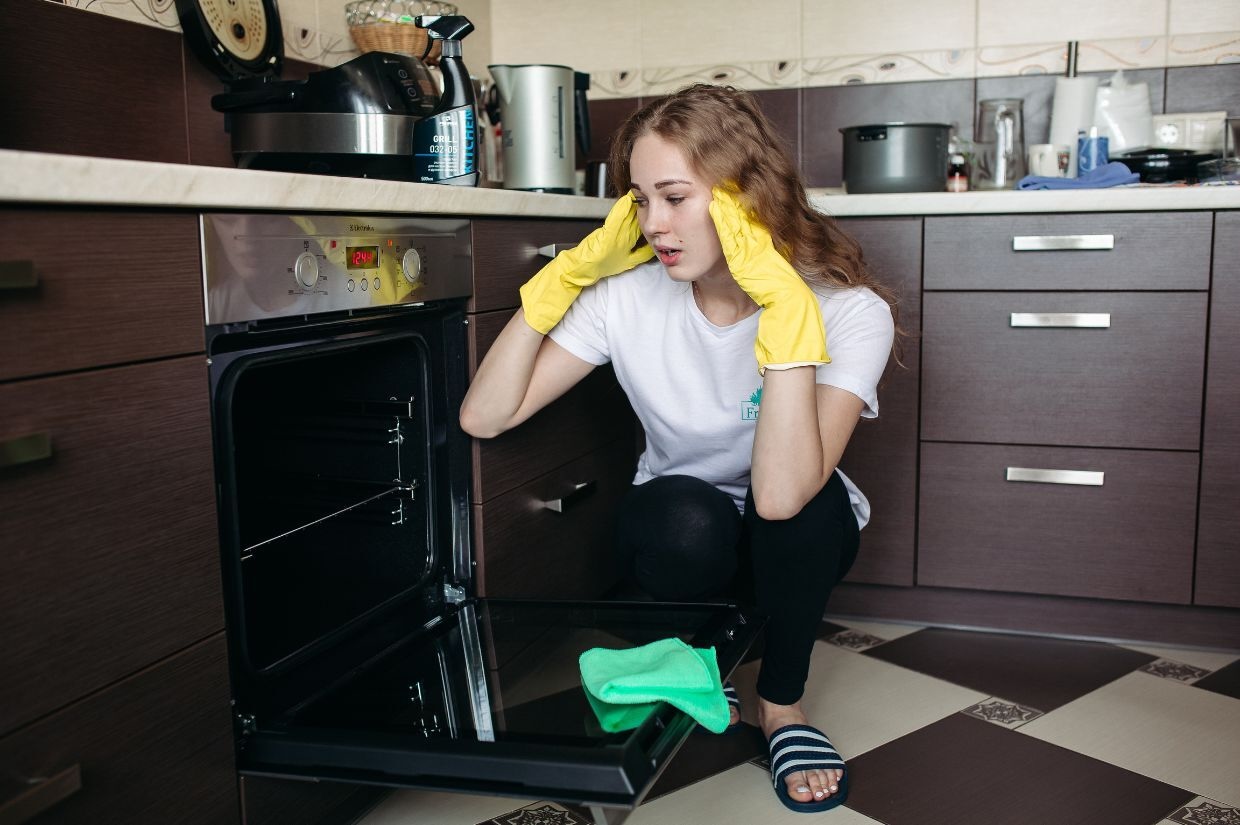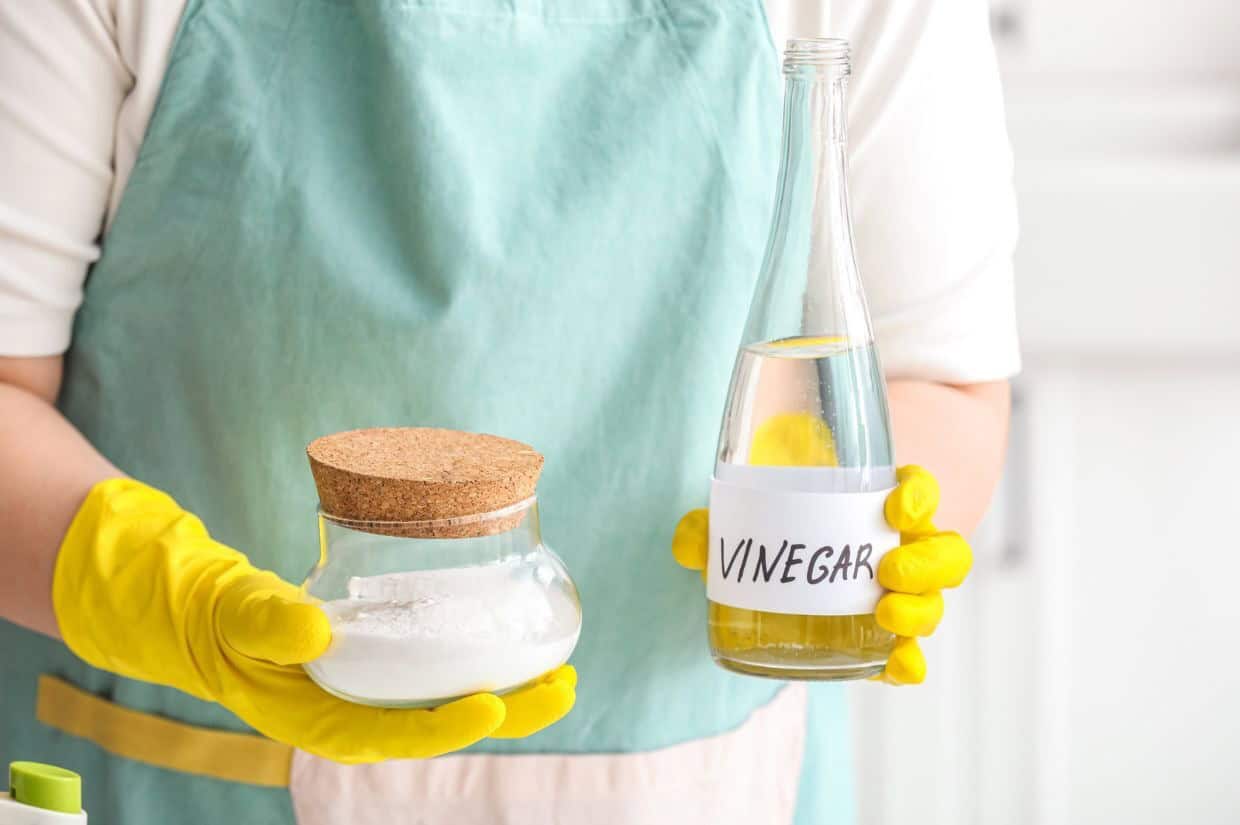A dirty oven can be an eyesore and make cooking less enjoyable, but the idea of spending hours scrubbing away baked-on grease is far from appealing. The good news? With the right approach and a few household items, you can tackle that grimy oven and restore it without all the effort.

Why clean your oven regularly?
Cleaning your oven isn’t just about the appearance. It can also affect how well your oven works. When grease, food splatters and burnt residue build up, it can create smoke, unpleasant odors and uneven cooking. Regular cleaning helps your oven run more efficiently, and by keeping grime under control, you can avoid those dreaded deep cleans that require hours of hard scrubbing.
The risks behind using self-clean mode
While your oven’s self-clean feature may seem like a quick fix, it has its downsides. This function operates at extremely high temperatures, sometimes reaching over 900 F. This can produce strong odors, smoke and even harmful fumes if there’s food residue inside.
This intense process can also put stress on the oven’s parts, potentially shortening its lifespan. In some cases, it may even cause overheating, tripping fuses or damaging nearby surfaces, leading to safety concerns. Opting for gentler, manual cleaning methods is a safer and more efficient way to maintain your oven without these risks.
What you’ll need
To get your oven sparkling clean, you won’t need much. These simple household items are non-toxic and highly effective at breaking down grease and grime so you can skip the harsh commercial cleaners. Using natural ingredients like baking soda and vinegar makes cleaning safer and contributes to a healthier home environment by reducing indoor air pollution. This approach minimizes allergens that often come with chemical-based cleaners.
Here is what you’ll need:
- Baking soda.
- White vinegar or lemon juice.
- A spay bottle.
- Rubber gloves.
- A microfiber cloth.
- Optional plastic scraper for tougher spots.

Use the power of steam
One of the easiest ways to soften stuck-on grime is by harnessing steam. Fill an oven-safe dish with water and a bit of vinegar or lemon juice, then place it in the oven at 250 F for about 30 minutes. The steam will loosen the gunk, making it easier to wipe away. A damp cloth can usually tackle the softened residue with minimal effort.
“When I clean the oven, I like to place an oven-safe bowl filled with water and lemon slices inside the oven and heat it to 250 F for about 30 minutes. The citrus steam helps loosen grease and grime, making it easier to wipe everything clean with a damp cloth afterward. Bonus — it also makes the kitchen smell lemony fresh.”
— Kristin King, Dizzy Busy and Hungry
Make a baking soda paste
Begin by removing the oven racks and setting them aside to clean separately. In a bowl, mix half a cup of baking soda with a few tablespoons of water to create a spreadable paste. Coat the interior surfaces of the oven with this paste, focusing on areas with the most buildup. The baking soda will work to break down grease without the need for scrubbing. Let the paste sit for at least 12 hours or overnight for best results.
Wipe it down with vinegar
After the baking soda has had time to work its magic, it’s time to wipe away the grime. Use a damp microfiber cloth to remove as much of the baking soda paste as possible. Then, fill a spray bottle with white vinegar and spritz the inside of the oven, especially where you notice any leftover baking soda. The vinegar will react with the baking soda, creating a gentle fizz that helps lift off any remaining residue. Wipe the surfaces again with a damp cloth until everything is clean and shiny.
Use a plastic scraper for tougher spots of burnt-on food. It can gently lift away stubborn residue without scratching the oven’s surface. Carefully maneuver the scraper along the edges of the stubborn areas to dislodge any remaining bits, making it easier to wipe them clean with a damp cloth.

Clean the racks
Your oven racks collect just as much grease and buildup as the interior. Instead of scrubbing them down by hand, soak them in warm, soapy water for a few hours to loosen any stuck-on food. One tab of dishwasher detergent dissolved in warm water works particularly well. After an hour or two, most of the grime will come off the racks with a gentle scrub. Rinse the racks thoroughly and dry them before placing them back in the oven.
Prevent future buildup
To make future cleanings easier, take steps to minimize messes in the oven. Consider using an oven liner to catch spills and prevent grease from building up on the bottom of the oven. Wipe up any spills as soon as they cool, rather than letting them bake on the surfaces. With these small habits, you can keep your oven cleaner for longer and avoid the need for deep cleaning as often.
One last thing
By using this gentle yet effective method, you can easily clean your oven without spending hours scrubbing. Baking soda and vinegar do the heavy lifting, so all you need is a bit of time and patience to restore your oven to its sparkling state.
Tamara Tsaturyan is the owner and writer of Thriving In Parenting. It’s a website focused on providing simple tips for busy parents — easy and healthy recipes, home decor and organization ideas and all things parenting.